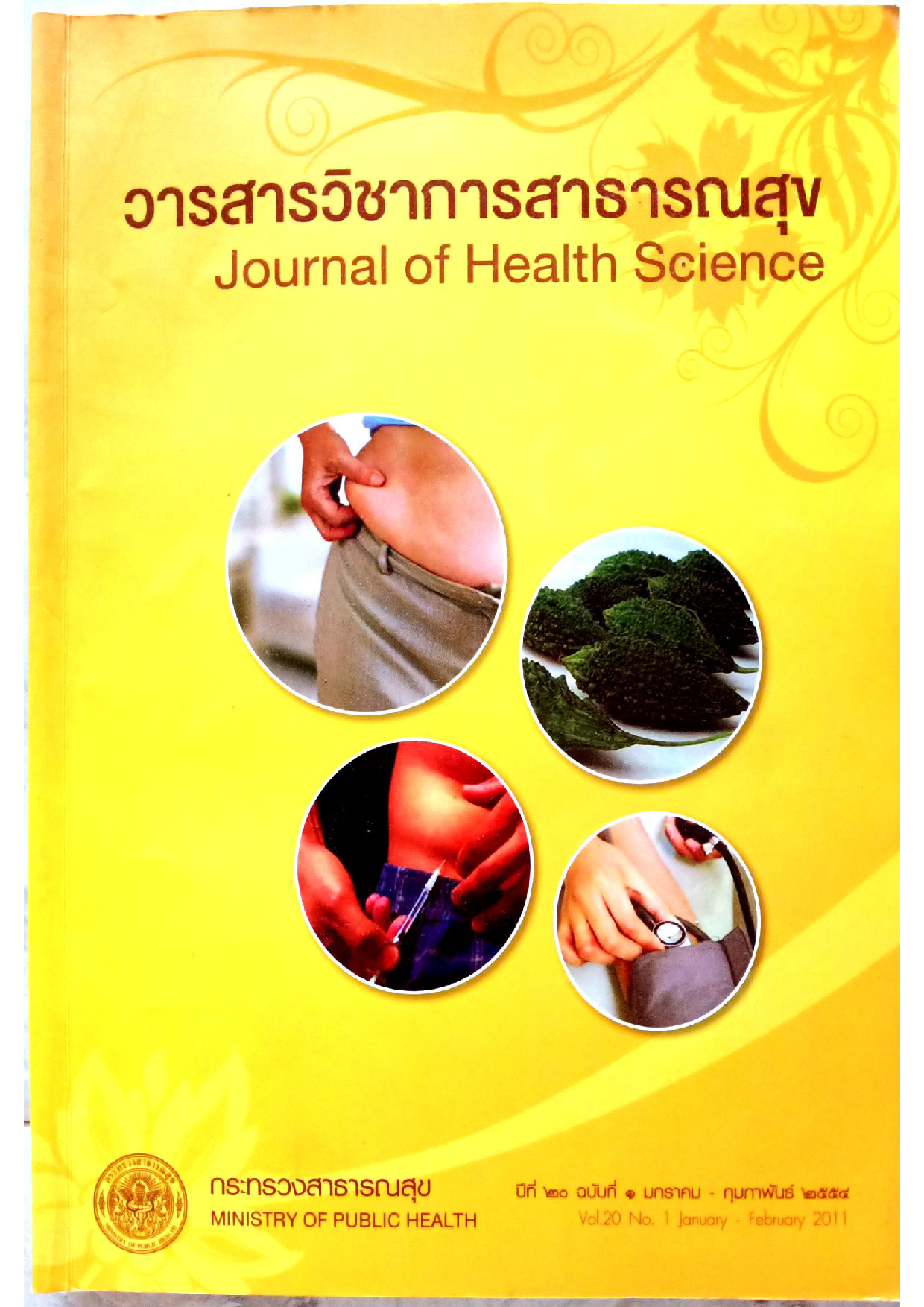Risk Assessment of Acrylamide in Foods for Thais
Keywords:
risk assessment, acrylamide in food, ThaisAbstract
A risk assessment study of dietary acrylamide intake of Thais was conducted during 2007 - 2008. The purpose of the study was to evaluate the health risks due to the exposure in Thai population. The result was subsequently used to develop both local and international standards for acrylamide in food and to increase public awareness. In a literature review hazard identification and dose response assessment were summarized. Exposure assessment data were concluded based on acrylamide quantity in food and daily intake. The risk assessment was done by comparing the dietary acrylamide intake with the tolerable intake level. In this study, the acrylamide quantity of 469 risk food samples were analysed by High Performance Liquid Chromatograph-Mass Spectrometer-Mass Spectrometer (HPLC-MS/MS) technique. The results showed that the highest mean level of acrylamide was found in ground chili at 2.179 mg/kg. The lower quantity was detected in potato flour-based crisps, potato chips, french fried and instant coffee, at the levels of 1.879, 0.813, 0.710 and 0.655 mg/kg, respectively. The research team had assessed the tolerable intake level of acrylamide from currently available toxicological data, resulting as 2 µg/kg body weight/day. In addition, the result revealed that the mean dietary exposure of acrylamide among Thai population was 0.50 µg/kg body weight/day, equal to 25 percent of the tolerable intake level. However among those who consumed the contaminated food at the level of 97.5 percentile would be exposed to acrylamide of 3.19 µg/kg body weight day, or equivalent to 1.6 times of the torelable intake level.
Downloads
Downloads
Published
How to Cite
Issue
Section
License
Copyright (c) 2011 Ministry of Public Health

This work is licensed under a Creative Commons Attribution-NonCommercial-NoDerivatives 4.0 International License.







